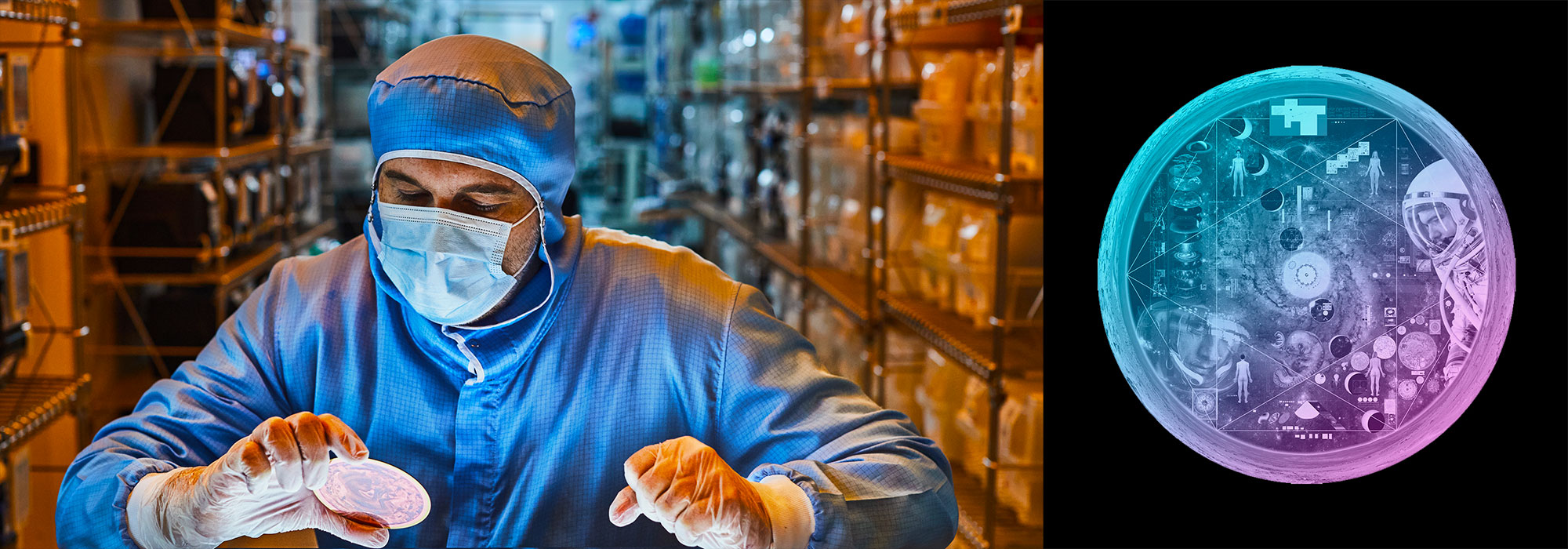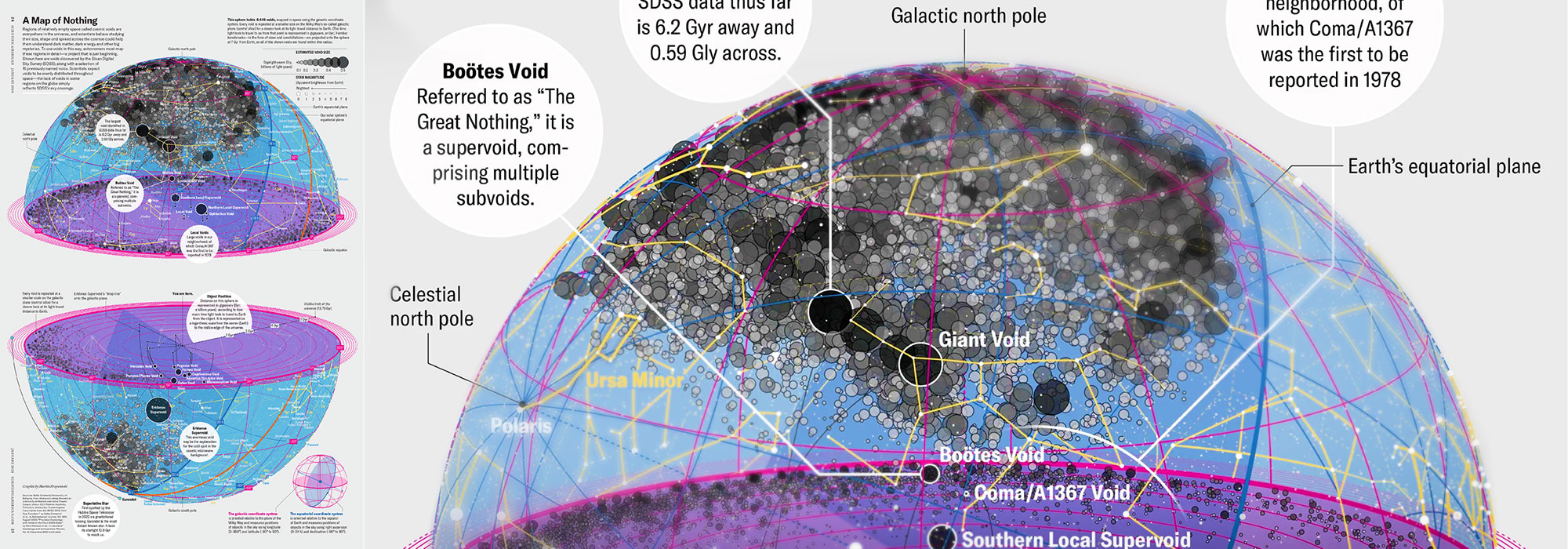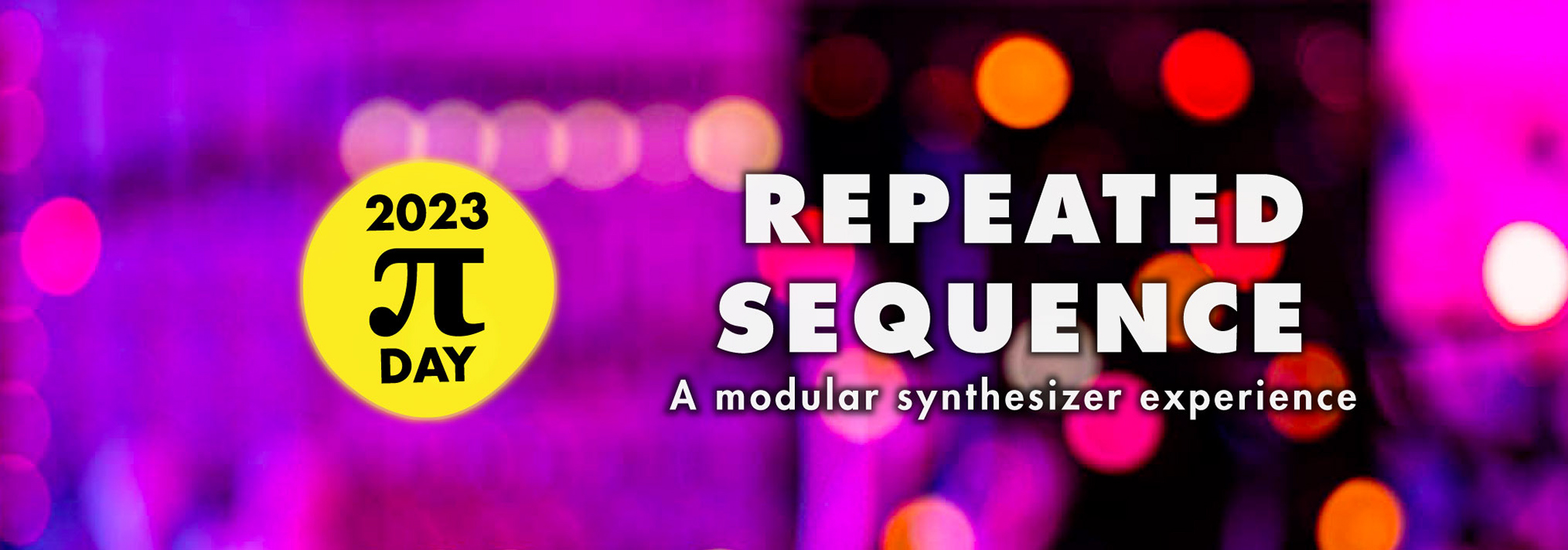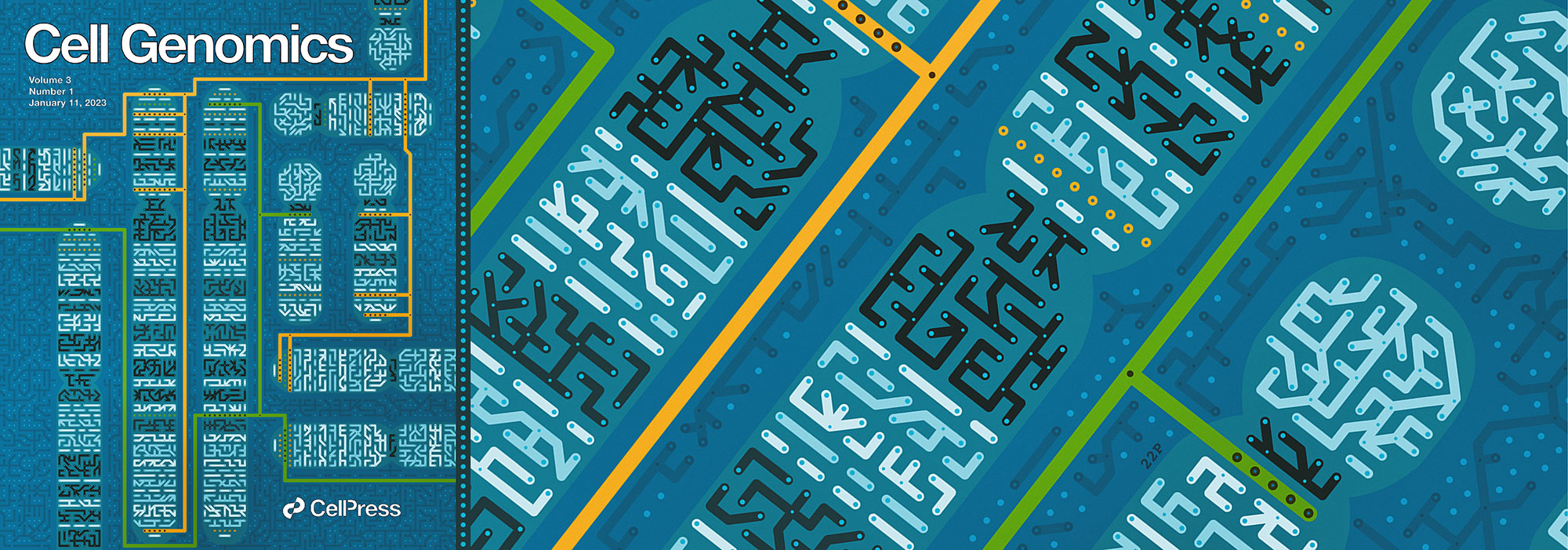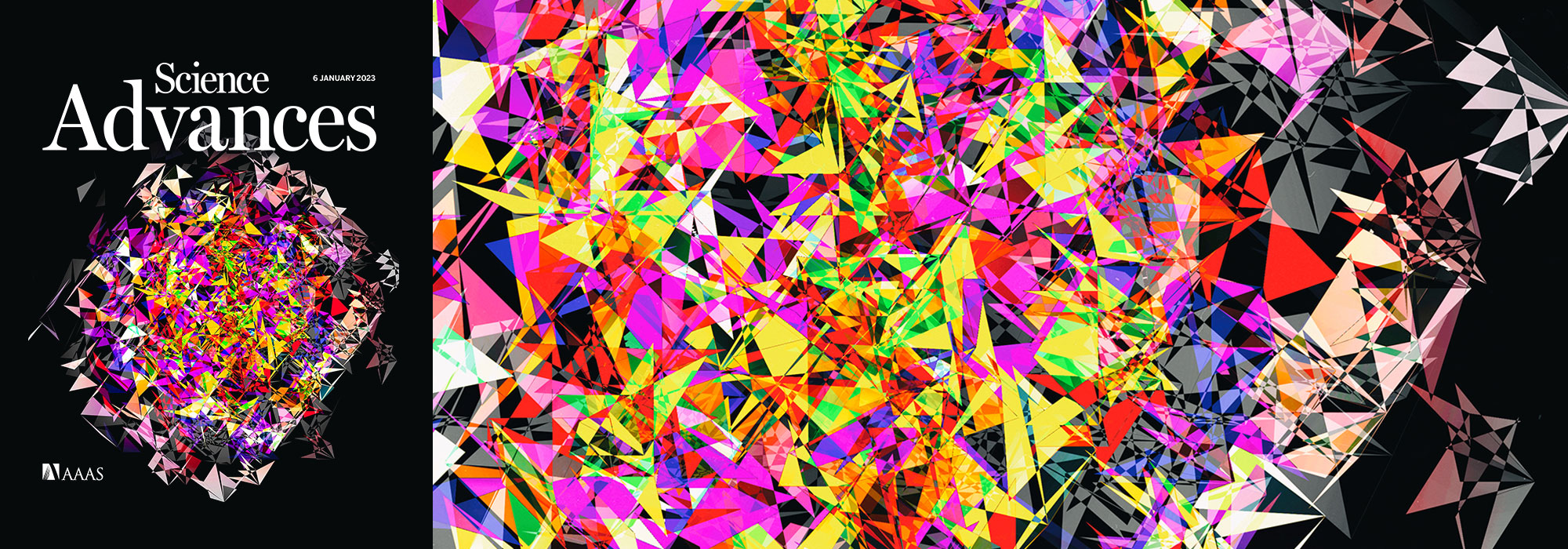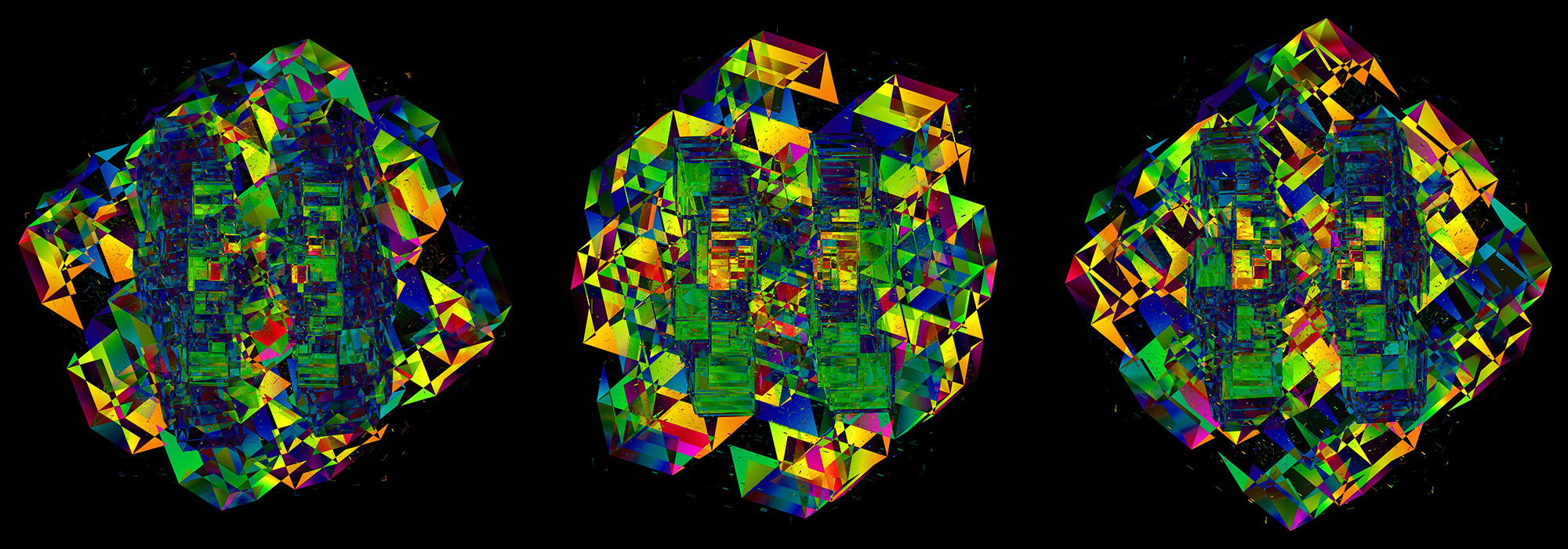ZOOM IMAGE
panel A - fingerprint BAC map
supplemental medium 1000 x 1000 large 3000 x 3000 | 600dpi PDF
print medium 1000 x 1000 large 3000 x 3000 | 600dpi PDF
panel B - YAC map
supplemental medium 1000 x 1000 large 3000 x 3000 | 600dpi PDF
print medium 1000 x 1000 large 3000 x 3000 | 600dpi PDF
zoom panel
print medium 80-200Mb chr2 fp map region PNG | PDF
credits and text figure caption below
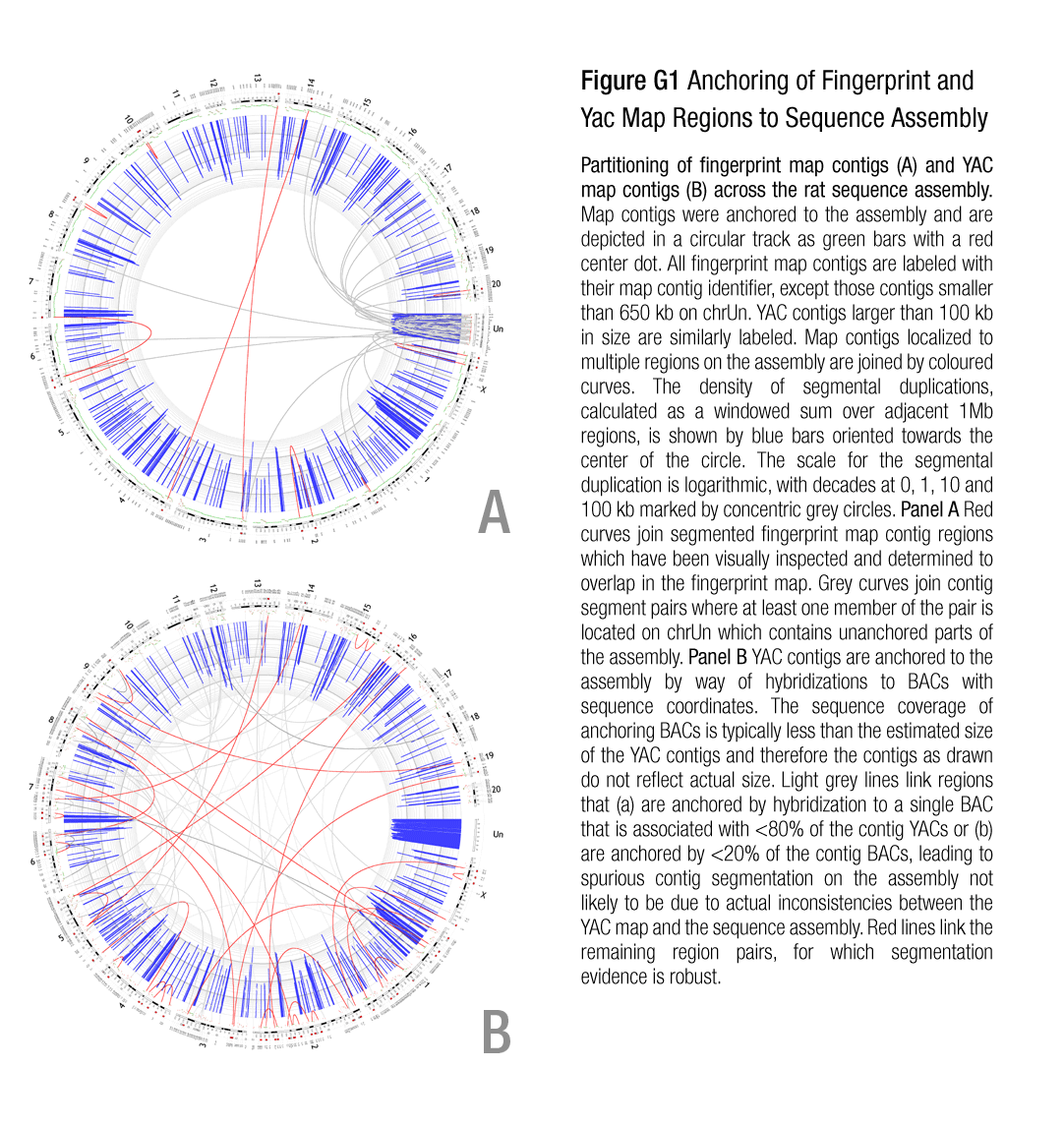
caption
Partitioning of fingerprint map contigs (A) and YAC map contigs (B) across the rat sequence assembly. Map contigs were anchored to the assembly and are depicted in a circular track as green bars with a red center dot. All fingerprint map contigs are labeled with their map contig identifier, except those contigs smaller than 650 kb on chrUn. YAC contigs larger than 100 kb in size are similarly labeled. Map contigs localized to multiple regions on the assembly are joined by coloured curves. The density of segmental duplications, calculated as a windowed sum over adjacent 1Mb regions, is shown by blue bars oriented towards the center of the circle. The scale for the segmental duplication is logarithmic, with decades at 0, 1, 10 and 100 kb marked by concentric grey circles. Panel A Red curves join segmented fingerprint map contig regions which have been visually inspected and determined to overlap in the fingerprint map. Grey curves join contig segment pairs where at least one member of the pair is located on chrUn which contains unanchored parts of the assembly. Panel B YAC contigs are anchored to the assembly by way of hybridizations to BACs with sequence coordinates. The sequence coverage of anchoring BACs is typically less than the estimated size of the YAC contigs and therefore the contigs as drawn do not reflect actual size. Light grey lines link regions that (a) are anchored by hybridization to a single BAC that is associated with <80% of the contig YACs or (b) are anchored by <20% of the contig BACs, leading to spurious contig segmentation on the assembly not likely to be due to actual inconsistencies between the YAC map and the sequence assembly. Red lines link the remaining region pairs, for which segmentation evidence is robust.
zoom panel The fingerprint map contig structure is shown in detail for the 80-200 Mb region of chr 2. The bottom contig track (green) shows the contigs in the manually edited map, which are merged with the assistance of sequence information into longer contigs (blue). Contig 3019 (contig 2040 in the merged map) maps to two disjoint regions by sequence. The histogram below the contig tracks shows the number of fingerprint map clones with sequence coordinate annotations in windows of 250kb.
history
9 dec 2003 - added zoom region showing 80-200Mb of chr2 in detail
24 nov 2003 - added low detail versions of images
8 oct 2003 - minor changes to figure caption; fingerprint map (panel a) redrawn using merged map, except for contigs with inconsistencies
29 sep 2003 - changes to figure caption
25 sep 2003 - created panels A (fingerprint map) and B (YAC map)
credits
BCGSC | Krzywinski, M., Fjell, C., Asano, J., Barber, S., Bosdet, I., Brown-John, M., Chan, S., Chiu, R., Chand, S., Cloutier, A., Flibotte, S., Girn, N., Gray, C., Kutche, R., Lee, D., Lee, S., Leach, S., Mathewson, C., Mayo, M., McLeavy, C., Olson, T., Pandoh, P., Prabhu, A., Shin, H., Spence, L., Taylor, S., Tsai, M., Yang, G., Wye, N., Siddiqui, A., Schein, J., Jones, S., Marra, M.
WUGSC | Wallis, J., Layman, D., Gaige, T., Mead, K., Albracht, D., Walker, J., Davito, J., Hillier, L., Sekhon, M., Graves, T., Warren, W., Mardis, E., Wilson, R.
Baylor HGSC | McPherson, J.
CHORI | Zhu, B., Osoegawa, K., de Jong, P.
MDC and MPI | Gosele, C., Hummel, O., Zimdahl, H., Kreitler, T., Himmelbauer, H., Ganten, D., Lehrach, H., Hubner, N.
TIGR | Zhao, S.
segmental duplication data by | Tuzun, E., Bailey, J.A., Eichler, E.E. (data)
Nasa to send our human genome discs to the Moon
We'd like to say a ‘cosmic hello’: mathematics, culture, palaeontology, art and science, and ... human genomes.



Comparing classifier performance with baselines
All animals are equal, but some animals are more equal than others. —George Orwell
This month, we will illustrate the importance of establishing a baseline performance level.
Baselines are typically generated independently for each dataset using very simple models. Their role is to set the minimum level of acceptable performance and help with comparing relative improvements in performance of other models.

Unfortunately, baselines are often overlooked and, in the presence of a class imbalance5, must be established with care.
Megahed, F.M, Chen, Y-J., Jones-Farmer, A., Rigdon, S.E., Krzywinski, M. & Altman, N. (2024) Points of significance: Comparing classifier performance with baselines. Nat. Methods 20.
Happy 2024 π Day—
sunflowers ho!
Celebrate π Day (March 14th) and dig into the digit garden. Let's grow something.

How Analyzing Cosmic Nothing Might Explain Everything
Huge empty areas of the universe called voids could help solve the greatest mysteries in the cosmos.
My graphic accompanying How Analyzing Cosmic Nothing Might Explain Everything in the January 2024 issue of Scientific American depicts the entire Universe in a two-page spread — full of nothing.
The graphic uses the latest data from SDSS 12 and is an update to my Superclusters and Voids poster.
Michael Lemonick (editor) explains on the graphic:
“Regions of relatively empty space called cosmic voids are everywhere in the universe, and scientists believe studying their size, shape and spread across the cosmos could help them understand dark matter, dark energy and other big mysteries.
To use voids in this way, astronomers must map these regions in detail—a project that is just beginning.
Shown here are voids discovered by the Sloan Digital Sky Survey (SDSS), along with a selection of 16 previously named voids. Scientists expect voids to be evenly distributed throughout space—the lack of voids in some regions on the globe simply reflects SDSS’s sky coverage.”
voids
Sofia Contarini, Alice Pisani, Nico Hamaus, Federico Marulli Lauro Moscardini & Marco Baldi (2023) Cosmological Constraints from the BOSS DR12 Void Size Function Astrophysical Journal 953:46.
Nico Hamaus, Alice Pisani, Jin-Ah Choi, Guilhem Lavaux, Benjamin D. Wandelt & Jochen Weller (2020) Journal of Cosmology and Astroparticle Physics 2020:023.
Sloan Digital Sky Survey Data Release 12
Alan MacRobert (Sky & Telescope), Paulina Rowicka/Martin Krzywinski (revisions & Microscopium)
Hoffleit & Warren Jr. (1991) The Bright Star Catalog, 5th Revised Edition (Preliminary Version).
H0 = 67.4 km/(Mpc·s), Ωm = 0.315, Ωv = 0.685. Planck collaboration Planck 2018 results. VI. Cosmological parameters (2018).
constellation figures
stars
cosmology
Error in predictor variables
It is the mark of an educated mind to rest satisfied with the degree of precision that the nature of the subject admits and not to seek exactness where only an approximation is possible. —Aristotle
In regression, the predictors are (typically) assumed to have known values that are measured without error.
Practically, however, predictors are often measured with error. This has a profound (but predictable) effect on the estimates of relationships among variables – the so-called “error in variables” problem.

Error in measuring the predictors is often ignored. In this column, we discuss when ignoring this error is harmless and when it can lead to large bias that can leads us to miss important effects.
Altman, N. & Krzywinski, M. (2024) Points of significance: Error in predictor variables. Nat. Methods 20.
Background reading
Altman, N. & Krzywinski, M. (2015) Points of significance: Simple linear regression. Nat. Methods 12:999–1000.
Lever, J., Krzywinski, M. & Altman, N. (2016) Points of significance: Logistic regression. Nat. Methods 13:541–542 (2016).
Das, K., Krzywinski, M. & Altman, N. (2019) Points of significance: Quantile regression. Nat. Methods 16:451–452.
Convolutional neural networks
Nature uses only the longest threads to weave her patterns, so that each small piece of her fabric reveals the organization of the entire tapestry. – Richard Feynman
Following up on our Neural network primer column, this month we explore a different kind of network architecture: a convolutional network.
The convolutional network replaces the hidden layer of a fully connected network (FCN) with one or more filters (a kind of neuron that looks at the input within a narrow window).

Even through convolutional networks have far fewer neurons that an FCN, they can perform substantially better for certain kinds of problems, such as sequence motif detection.
Derry, A., Krzywinski, M & Altman, N. (2023) Points of significance: Convolutional neural networks. Nature Methods 20:1269–1270.
Background reading
Derry, A., Krzywinski, M. & Altman, N. (2023) Points of significance: Neural network primer. Nature Methods 20:165–167.
Lever, J., Krzywinski, M. & Altman, N. (2016) Points of significance: Logistic regression. Nature Methods 13:541–542.



